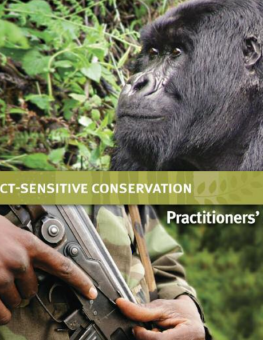
Conflict-Sensitive Conservation: Practitioners' Manual
The Albertine Rift is one of the most biodiverse and ecologically unique regions of Africa. Sadly it has also been the site of some of the world's most violent conflicts in recent history. This turbulent context can pose a range of risks and opportunities to conservationists who are managing resources that can be both a seed of conflict and foundation for peace-building.
The Albertine Rift is one of the most biodiverse and ecologically unique regions of Africa.
Sadly it has also been the site of some of the world's most violent conflicts in recent history. This turbulent context can pose a range of risks and opportunities to conservationists who are managing resources that can be both a seed of conflict and foundation for peace-building.
With the financial support of the MacArthur Foundation and the technical support of the Conservation Development Centre, IISD has been working with the World Wide Fund for Nature and the Wildlife Conservation Society in the Democratic Republic of the Congo, and CARE (Cooperative for Assistance and Relief Everywhere) International in Uganda to better understand the context in which they operate and apply a conflict lens to their work. This work led to the development of the "Conflict-Sensitive Conservation Practitioners' Manual," which provides an analytical and decision-making framework to help conservationists understand and address natural resource-based conflict, and integrate this understanding into conservation programming and implementation. In so doing, conservationists can avoid exacerbating conflict and maximize opportunities for peace-building.
Additional downloads
You might also be interested in
CSC Stories: Restoring the Lake Edward Fishery in Virunga National Park
A short profile of efforts by IISD and the Wildlife Conservation Society to address the impacts of conflict on the Lake Edward fishery in Virunga National Park in the eastern Democratic Republic of Congo.
CSC Stories: Developing Conflict-Sensitive Management Strategies in Public-Private Conservation Concession in the Amazon
A short profile of efforts to reduce social conflicts around the Los Amigos Conservation Concession in the Peruvian Amazon by incorporating the conflict-sensitive conservation approach into conservation planning and strategies.
CSC Stories: Supporting Community Conservation in Kahuzi Biega National Park
A short profile of work by IISD and the Wildlife Conservation Society to reduce people-park conflicts by strengthening community involvement in conservation strategies in Kahuzi Biega National Park in the eastern Democratic Republic of Congo.
Conservation and Peacebuilding in Sierra Leone
The aim of this paper is to assess the status of conservation in Sierra Leone, to outline some of the key threats to protected area management in the country and try to understand how to manage protected areas in a way that does not create or exacerbate tensions and conflicts.